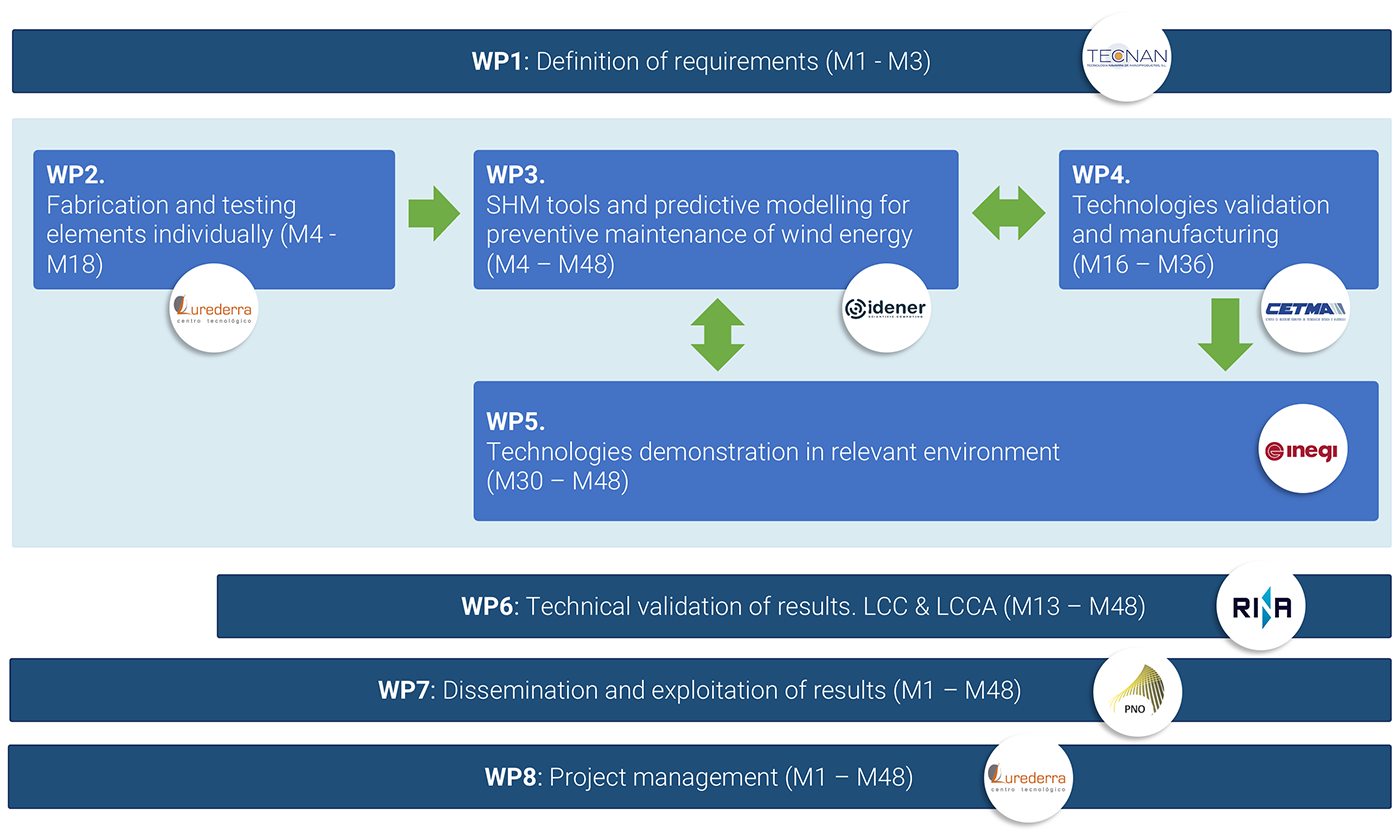MAREWIND’s implementation plan has 8 work packages, following the general structure below:


WP1: Definition of requirements
Lead by TECNAN, this work package aims to define the requirements and characteristics of new materials, including testing procedures. It will outline and quantify improvements and final properties targeted related to cost, as well as defines sensors types, configuration, full-field techniques requirements. Furthermore, a roadmap for all demonstration sites implementations with identified conditions and required equipment for each predefined demonstration sites.WP2: Fabrication and testing elements individually
LUR will lead WP2 that is designed for formulation, application and optimization at lab-scale coatings for anticorrosion on metallic materials, antifouling for metallic and plastic materials and anti-erosion/superhydrophobic paints for leading edge protection. This WP will also oversee the synthesis and selection of new concrete materials and testing/aging at lab scale. Furthermore, during this phase new composite laminates for wind blades, optimization and testing properties at coupon level will be produced.WP3: SHM tools and predictive modelling for preventive maintenance of wind energy
IDE will lead WP3 that focus on developing and applying full-filed measuring techniques of wind blade working conditions: hardware, measurements and algorithms. WP3 will also carry out implementation and assessment of FBGs/DFOs technologies for composite and concrete representative laboratory components. It will also develop models based on experimental and artificial intelligent algorithms which provides predictions of corrosion rate and protection of coatings in offshore structures at different environmental conditions.WP4: Technologies validation and manufacturing
Main objectives of WP4, led by CETMA, will be:- Validation of selected materials and integration to be tested at relevant environment.
- Optimisation of fabrication and application procedures of materials selected.
- Production of prototypes validated according to manufacturer quality checks.
- Implementing circular use of blade materials at prototype level.
- Obtention of results for final definition of scenarios to be tested in WP5.
- Identification of standard gaps.
WP5: Technologies Demonstration in relevant environment
INEGI will oversee the following objectives:- Build and implement demonstrative prototypes.
- Demonstrate the performance improvement of the validated materials and production processes in WP5 in variety of environments
- Monitor and report the obtained data, as well as assess technical improvements and cost reductions.
